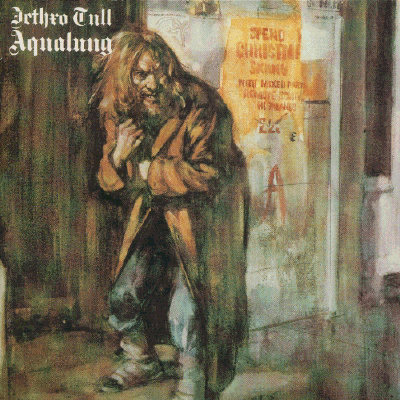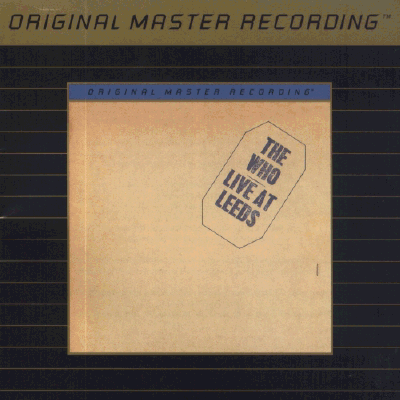
BEE GEES
Trafalgar (MFSL UDCD 680)
1971.wv.scans.cue.log
Seguimos con algunos discos encontrados en la red y que no estan el la mula. Espero ir de compras dentro de unos dias para poner mas material original.
Los Bee Gees no han sido santos de mi devocion, salvo algunos de sus primeros lps. Tengo casi toda la discografia en vinilo, encontrada hace años en el rastro de Barcelona, una ganga. De entre ellos, "Idea", "Cucumber Castle" y este "Trafalgar" son algunos de los que mas me gustaron.Aunque los Bee Gees son sinónimo de musica disco toda su carrera han interpretado el rock mas elaborado, de hecho son los principales exponentes de la balada soft rock. 35 años cimentaron una de las trayectorias más importantes de la música rock, de hecho ese reconocimiento fue coronado cuando ingresaron en 1997 al salón de la fama del rock mundial.
Barry Gibb nació en septiembre de 1946 en la
Isla de Man (Inglaterra), segundo hijo (primero fue Lesley) del matrimonio compuesto por Hugh y Barbara Gibb, el primero un prominente baterista de su época. De ahí tal vez parte su gusto por la música. Barry no tuvo que esperar mucho para recibir a los que serían los demás miembros de su grupo, pasaron 3 años y nacieron el 22 de diciembre de 1949 los gemelos
Robin Gibb y
Maurice Gibb (con 38 minutos de diferencia), sus hermanos con los que formaría en un corto futuro el grupo que se lanzaría a la fama en un programa de televisión de Inglaterra cuando Barry tenía 9 años y los gemelos 6. A partir de ahí todo fue éxito. Mientras recibían la influencia total de los Beatles, los hermanos Gibb pensaron en un nombre que los inmortalizara, y que no fuera fácil de olvidar. Y fue hasta que Barry en una presentación decidió abreviar el nombre de “Brothers Gibb” "Barbara Gibb" y otras coincidencias que iniciaban con las letras iniciales B y G.
En inglés entonces serían los Bee Gees y utilizarían ese nombre para todas sus presentaciones posteriores. Iniciaron los tres hermanos con éxitos como “Cherry Red”, o Spicks and Specks” que tuvieron mucho éxito con los jóvenes de su época, pero aún no encontraban el apoyo de una disquera. Hasta que el productor Robert Stigwood captó el talento del trío y los convocó a grabar un demo junto con los músicos Vince Molonely y Colin Peterson.
El resultado fue muy favorable, y después de casi 60 canciones diferentes, los Bee Gees grababan su primer disco “oficial” (aunque ya contaban con dos producciones no comerciales tituladas Barry Gibb and the Bee Gees y Spicks and Specks) que llevó por nombre Bee Gees First y que salió en el año de 1967 y teniendo como integrantes a Barry Gibb, Robin Gibb, Maurice Gibb, Vince Molonely y Colin Peterson, de ese disco destaca sin lugar a dudas una de las melodías que ha sido reconocida por artistas de todos los idiomas a través de “covers”: “To love somebody”. Un año después y con una marcada influencia “beatle” sacaron al mercado el LP titulado Horizontal en el que se destaca el gran talento individual de Robin en cuanto a la interpretación, ya que se consagra con sencillos como “And the sun will shine” y “Massachusetts”.
Con su tercera producción “Idea” los hermanos Gibb le mostraron al mundo que estaban para algo más grande, mostraron su capacidad de interpretar varios géneros musicales entre los que destacan la balada pop, la balada rock, el rock y el country rock. De hecho quien adquiere este disco puede disfrutar de una de las canciones de mayor éxito en la historia de la música “I started a joke” (Yo comencé la broma).
Aquí empezaron los problemas, porque Vince y Colin no se sentían parte del grupo porque todas las decisiones importantes las tomaban únicamente los hermanos, es decir dos de ellos, porque Maurice se preocupaba más por los arreglos musicales que por determinar quién cantaba el siguiente “éxito”.
Fue así como después de “Idea” Barry y Robin se empezaban a distanciar porque cada uno se autonombraba líder de los Bee Gees.
Para el cuarto album (que fue doble) “Odessa” no se pusieron de acuerdo para determinar cual era el primer sencillo que iban a sacar al mercado, la lucha era entre “Lamplight” de Robin o “First of May” de Barry, finalmente fue esta última la que “ganó”.
Robin molesto por la decisión decidió abandonar a sus hermanos y determinó hacer su propia carrera como solista, fue así como sacó al mercado su primer album como solista en 1970 llamado “Robin's Reign” que tuvo mucha aceptación en Europa sobre todo con el sencillo llamado “Saved by the bell”, también tuvo un intento fallido con el disco "Sing Slowly Sisters".
Mientras Robin triunfaba, Barry y Maurice hicieron una serie de televisión que llevó el nombre de Cucumber Castle y que les inspiró para su próximo disco (sin Robin, Colin y Vince) que llevaría el mismo nombre. Casualmente los dos hermanos querían seguir la agrupación con Robin y le enviaron un mensaje con este disco, ya que el Robin's Reign de Robin y el Cucumber Castle de Barry y Maurice hacían alusión a la realeza y en sus respectivas portadas y los tres salieron disfrazados de personajes de la edad media.
Poco después se dio lo inevitable Robin regresó y crearon el quinto disco que para muchos es una obra de arte “Two years on” en el que se nota el gusto de los tres por volver a estar juntos, en este LP destacó la melodía Lonely Days que aún tocan en sus conciertos. El título de este acetato se da por la separación de los hermanos durante dos años (1969-71).
El mismo año del rencuentro sacaron al mercado el disco "Trafalgar", que para muchos es la obra cumbre de los Gibb en lo que corresponde a la balada rock. En este disco se pueden disfrutar temas como “How can you mend a broken heart” y “Dearest”.

 1. "How Can You Mend a Broken Heart?" (Barry Gibb/Robin Gibb) – 3:58 2. "Israel" (B. Gibb) – 3:44 3. "The Greatest Man in the World" (B. Gibb) – 4:17 4. "It's Just the Way" (Maurice Gibb) – 2:33 5. "Remembering" (B. Gibb/R. Gibb) – 4:01 6. "Somebody Stop the Music" (B. Gibb/M. Gibb) – 3:31 7. "Trafalgar" (M. Gibb) – 3:53 8. "Don't Wanna Live Inside Myself" (B. Gibb) – 5:24 9. "When Do I" (B. Gibb/R. Gibb) – 3:57 10. "Dearest" (B. Gibb/R. Gibb) – 3:52 11. "Lion in Winter" (B. Gibb/R. Gibb) – 3:59 12. "Walking Back to Waterloo" (B. Gibb/M. Gibb/R. Gibb) – 3:51
1. "How Can You Mend a Broken Heart?" (Barry Gibb/Robin Gibb) – 3:58 2. "Israel" (B. Gibb) – 3:44 3. "The Greatest Man in the World" (B. Gibb) – 4:17 4. "It's Just the Way" (Maurice Gibb) – 2:33 5. "Remembering" (B. Gibb/R. Gibb) – 4:01 6. "Somebody Stop the Music" (B. Gibb/M. Gibb) – 3:31 7. "Trafalgar" (M. Gibb) – 3:53 8. "Don't Wanna Live Inside Myself" (B. Gibb) – 5:24 9. "When Do I" (B. Gibb/R. Gibb) – 3:57 10. "Dearest" (B. Gibb/R. Gibb) – 3:52 11. "Lion in Winter" (B. Gibb/R. Gibb) – 3:59 12. "Walking Back to Waterloo" (B. Gibb/M. Gibb/R. Gibb) – 3:51
Enlace en comentarios/Link in comments
Etiquetas: Audiophile


























